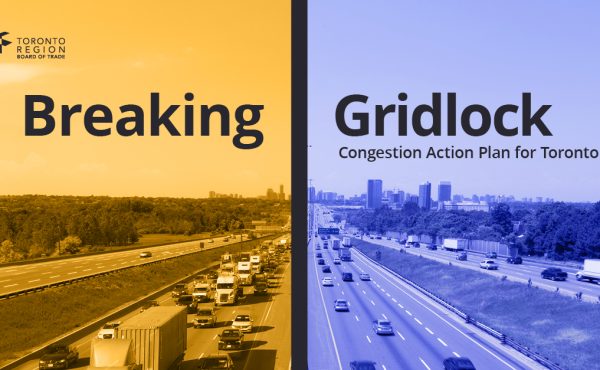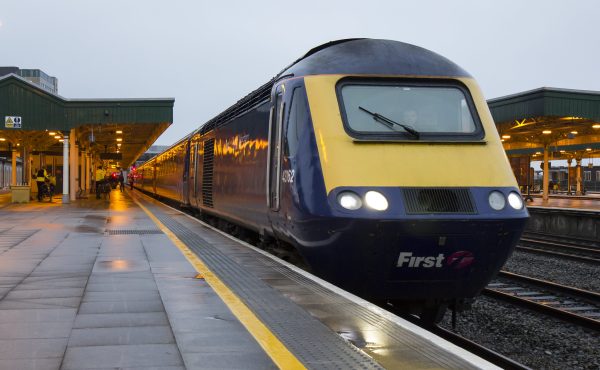SFpark Overview from SFpark on Vimeo.
I know I’m stating the obvious when I say this: parking a vehicle downtown, in Toronto or any city, can be a challenge if not entirely frustrating. But the parking policies of a city go a long way in determining how a city is experienced at street level. For instance, the city of Prince George, BC has nearly 50% of its entire downtown area covered in parking lots. Toronto’s downtown used to be quite similar but over the last 30 years office towers, condos and retail spaces have slowly been built over those paved wastelands.
San Francisco is taking a unique approach to its parking woes: a new system called SFPark. It allows drivers to look up available parking spots before they leave their home or office, while at the same time adjusting prices to fit the demand of spaces.



10 comments
In Dublin, there are electronic boards which would tell you how many spots were available at various lots downtown. While smart phones obviously allow us to check websites for available parking spots while on the road, there’s no guarantee that those spots are still there if we only have the ability to check it from home. So Dublin’s system (and I don’t know how good it is, I just remember seeing it) is a decent solution. Mind you, one downside of their system is that if there is an event going on downtown and all the lots are full, the idea that you should have taken public transit to get where you’re going wouldn’t really hit you until you pretty much got on the road.
I was recently in Boston and couldn’t help but notice how many parking garages they have. I wonder if they have a similar system or anything in the works.
@James – there is a way to find out, but in an unsurprising fail it’s IE only as it uses ActiveX: http://www.dublincity.ie/dublintraffic/carparks.htm
I’m not sure allowing extended purchase of on-street parking is a good idea, in an otherwise decent scheme.
Nice.
In comparison the Toronto Parking Authority is quite useless. It has the potential to drive city policy forward (no pun intended). While SF is up to the use of technology, and the Montreal Parking Authority launched Bixi, we’re left in the dust.
The TPA, instead of merely expanding its parking lots in its revenues, could:
– promote permiable paving, innovative stormwater management and improve the overall sustainability of their parking lots
– expand bike parking within its lots. given the space they take up, it wont cost them a fortune
– work with Build Toronto to monetize lots in prime locations
Anyone know what the TPA is up to? (if anything)
I was kind of surprised by the 50% figure, but then I looked at a google satellite view and it seems pretty close to correct. Funnily enough, most people go shopping in the big box plazas outside of downtown, at least partially because downtown is perceived as not having enough parking.
It’s understandable, though. Prince George is a city with, at best, a rudimentary public transit system. It doesn’t effectively cover the city, stops around 9pm at night, and even when the buses are running, they’re few and far between. I’m not sure it’s a city that even could have a working transit system — it’s very spread out, any housing growth that happens, happens in a sprawling way on opposite ends of town, and those ends of town are up steep, giant hills that the buses often have trouble getting up in the winter (and winter in Prince George is 6 months of the year in a mild year).
Yes, the greatest thing to happen to Toronto since 1980 has not been any single building but rather the collective development of all of those vitality-sucking urban parking lots. (Remember lower Jarvis in the 90s?) Really quite amazing, and probably the greatest overall infill project of any North American centre of all time.
However, I don’t think there is really any relationship between the prevalence of urban parking lots and parking policies. The disappearance of Toronto’s lots was due to transit, traffic, acceptance of high rises as starter homes, surprisingly consistent economic strength, media depictions of city living and a dozen other factors that seemed to create a collective concentration on downtown. Given the right economic inputs, developers then found more productive uses for those parking lots and away they went. I don’t know Prince George, but I imagine that land is available and inexpensive, transit and traffic are nonexistent, and the local economy is not strong. Taxes probably penalize buildings and rewards parking lots, so a simple surface lot is simply the easiest way to make money on a piece of land.
SF’s trial with dynamic meters is not related to urban development but rather trying to address the fact that a certain number of people will always drive somewhere but their impact is unduly amplified by endless circling while looking for parking. And why do they circle? Because free or nearly free parking is too much of a lure. Come on, we’ve all done this — rather than pull into a garage and pay $10 you’ll happily spend 20 min driving around looking for that free or $2 spot. When you find it, victory! If you can more quickly find a spot, or if the garage suddenly is the same price as street parking, the hope is that you will be off the street quickly, reducing traffic.
It’s a neat theory and one that has been often discussed. With modern tech (cheap sensors and prevalence of smartphones) I suppose it’s worth a shot. Of course, traffic is elastic, so if it is suddenly easier to drive downtown because of more efficient parking you might generate more driving trips…. but SF is a bit unique because the main impediment to driving in from the suburbs is the bridge traffic, and SF Park will have no impact on those 60 min jams to cross the Bay Bridge. If it works well expect to see some version of this applied elsewhere, especially since street parking is in general underpriced everywhere and this kind of program provides a way to raise rates without generating storms of war-on-the-car protest.
This is quite interesting…30 years ago Torono has parking…then they build over the parking lots…density increases…bringing in more vehicles…but there is less place to park. So the logical solution would be…..improved public transit….improved bike infrastructure. If it is harder to find parking and there are more cars on the road, why do we not see a rise in transit use? Why do we not see more $ committed to transit improvements/bike lane infrastructture…those running for mayor should read what they are doing in San Francisco…
Much of the new development that has replaced the parking has been residential.
The people that live there either walk to work or drive to work in the suburbs. The result is increases an density that reduces demand for transit and parking in the area that it occurs, except for the parking built for residents, but that isn’t public parking.
Michael, not all surface parking was ‘built over’. Many lots were ‘replaced’ and supplemented with expanded underground parking as part of a new development. So the development itself could absorb the old parking along with new demands it created.
One of the arguments for Congestion Pricing is that a small decrease in volume creates a much bigger improvement in traffic flow. It would seem that this idea has similar opportunities. Additionally, IF electric cars truly become common in our urban environments, then the ability to reserve (or at least pre-locate) a parking space with plug-in facilities will also be a value-added service to the parking industry. Of course, there are also a number of online ‘broker’ sites now that will let you rent out your private space ie use existing infrastructure more efficiently – although current Toronto bylaws do not actually allow this.